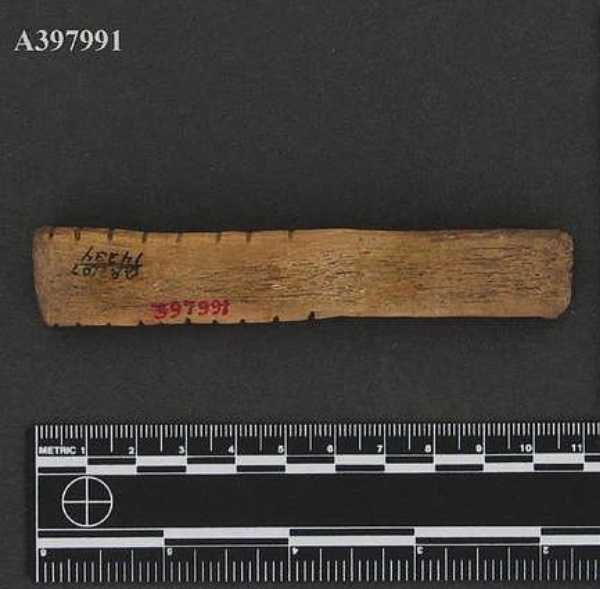
In 1950, the Rochester Museum of Arts and Sciences donated several modified bone and antler artifacts from the Lamoka Lake Site to the Smithsonian Institution. One of them was the artifact above (Accession No. A397991), made from a white-tailed deer or possibly elk (wapiti) antler.
William Ritchie, in his 1932 report, considered this and other artifacts like it as possible pendants, amulets, or tally sticks. They may also have had a more practical use. Some antler artifacts from the site were also decorated with red ochre stripes. To my knowledge, these artifacts have not been studied by anyone else since the original analysis by Ritchie in the 1920s.
